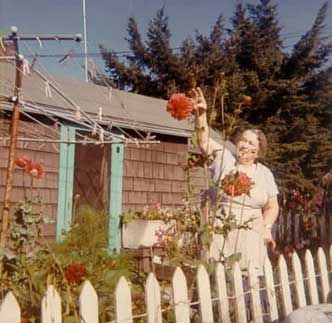The Stump Ranchof the Upper Skagit Valley Introducing Mabel Florence Boyd Royal-Steen |
 |


|
The Stump Ranchof the Upper Skagit Valley Introducing Mabel Florence Boyd Royal-Steen |
 |


|
 Mabel and her brood, ages 2- 16, spent their first night on the land sleeping under the stars. The next day they put up the old round Army tent that was their home until a real one could be built, the boys set out to find a neighbor who'd let them have water for drinking and cooking.
Mabel and her brood, ages 2- 16, spent their first night on the land sleeping under the stars. The next day they put up the old round Army tent that was their home until a real one could be built, the boys set out to find a neighbor who'd let them have water for drinking and cooking. "Oh welcome heavenly rain. Just to know that we wouldn't be chasing sparks day and night was too good to be true," she wrote. The rain came, the tent leaked.
"Oh welcome heavenly rain. Just to know that we wouldn't be chasing sparks day and night was too good to be true," she wrote. The rain came, the tent leaked.